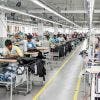In 1961, Economics Nobel Prize winner James Meade predicted a bleak future for Mauritius. He found lack of job opportunities outside the sugar sector. Yet Mauritius proved him wrong by successfully transforming itself from a poor monocrop economy into a diversified one, and today featuring among African countries with the highest per capita income.
The spectacular success of Mauritius, spanning several decades, through successive governments, lies in its perfect blend of political stability, strong regulatory framework, open trade policies and favorable business climate, a conducive environment that has shaped the economy to what it is today. Real GDP growth has averaged more than 5 percent since 1970 and real annual growth in per capita income, likewise, has been strong. GDP per capita increased more than tenfold between 1970 and now. At the same time, all efforts at economic diversification have been successful, allowing the country to move from sugar to textiles and then to a broader service economy, as new sectors keep emerging.
[[{"type":"media","view_mode":"media_large","fid":"12732","attributes":{"class":"media-image wp-image-20970","typeof":"foaf:Image","style":"","width":"289","height":"297","alt":"The sugar sector has for long been a strong pillar of the economy."}}]] The sugar sector has for long been a strong pillar of the economy.<
/div>
The country has pursued a very liberal investment regime and managed to attract huge amounts of foreign direct investment (FDI) through attractive fiscal and other incentives. New sectors such as light manufacturing, offshore banking and financial services, freeport, information and communication technology (ICT), real estate and seafood have contributed massively to wealth generation. In one of its regular reports, the World Bank states that “Mauritius’ impressive economic performance has not been an accident, but rather the result of careful planning and policies.” Indeed, the current government wants to replicate, at all costs, the ‘economic miracle’ of the early 80s that propelled the economy to new heights.
The country has however faced high exogenous shocks to its economy in recent times—the phasing out of the Multifibre Arrangement governing textiles, significant reductions in EU sugar protocol prices, the 2008 food and fuel crisis, and the 2008–09 global financial crisis— yet the economy showed strong resilience, thanks to robust economic measures taken to contain risks.
Sugar and textile revenues have been used to facilitate service-sector development and contribute to socioeconomic progress and higher living standards. Flexible public policy, creating EPZs in the 1980s and embracing the ICT industry in the 2000s, was also an important feature.
Over time, there has been a profound change in the sectoral composition of the Mauritian economy. Between 1976 and 2015, the share of primary-sector production declined from 23 percent of the overall economy to 5 percent, while the secondary sector (including manufacturing, electricity, water, and some construction) increased from about 23 to 29 percent and the tertiary sector, which includes tourism and financial services and ICT, is now the dominant feature of the economy in terms of contribution to output.
The 70s: from sugar to manufacturing
Since Independence in 1968, sugar was the dominant sector. Mauritius succeeded in obtaining preferential treatment from the European Economic Community (EEC) through the Sugar Protocol of the Lomé Convention in 1975, under which it received more or less free access for its sugar exports to the EEC. Mauritius sold its sugar to the EEC at a premium—three times the international market price, on average. In the late 70s the manufacturing sector sprung up with the advent of ‘Import Substitution Industries’, where manufactured goods such as toothpaste, paper converting, soaps, etc were mainly for local consumption.
[[{"type":"media","view_mode":"media_large","fid":"12733","attributes":{"class":"media-image aligncenter wp-image-20971","typeof":"foaf:Image","style":"","width":"677","height":"508","alt":"Fashion"}}]]
The 80s: Textile boom
The 80s saw powerful incentives to manufacturers catering for foreign markets. Almost 80 percent of workers in the EPZs in the 1980s were women. The rate decreased somewhat in the 1990s and 2000s, but women continue to be more than 60 percent of the workers in the zones. EPZs accounted for more than 60 percent of Mauritius’ gross export earnings and employed one-third of the Mauritian labor force. Most of the goods produced in EPZs were exported to the EU under a preferential regime. Notably, there was significant interaction between sugar sector and EPZs. Much of the start-up capital for EPZ firms, as well as technical and managerial expertise, came from the well-established sugar companies in the aftermath of the sugar boom in the 1970s. Several additional factors contributed to Mauritius’ success with EPZs. First, the country took advantage of the depth of demand for textiles and apparel in the EU and United States, which provided a solid base for expansion. Second, Mauritius’ timing was good, as its initial entry into the U.S. market got a boost from investors based in Hong Kong who were seeking to move capital and factories out of Hong Kong in anticipation of 1997 reunification with China. Third, quotas on Asian textile exports into Western markets led investors to look for alternate production countries. Those investors brought capital, marketing networks, and technological know-how to Mauritius’ nascent textile sector.
[[{"type":"media","view_mode":"media_large","fid":"12734","attributes":{"class":"media-image wp-image-20972 alignleft","typeof":"foaf:Image","style":"","width":"232","height":"223","alt":"Tourism"}}]]The 90s: Tourism and financial boost
The tourism sector was blooming alongside the manufacturing sector in the late 80s but gained momentum in the 90s. The 90s also saw the advent of the Freeport sector and the consolidating of the financial services sector and more impetus on offshore banking. When sugar and EPZ sectors started struggling, the tourism sector expanded rapidly, thanks to our beautiful beaches, a multiethnic society, and excellent hotels dotting the coastline. Tourist arrivals reached 240,000 in 1988, 400,000 in 2000, and 900,000 in 2008. The one-million mark was crossed in 2014.
The 2000s: Enter ICT and Real Estate
After the year 2000, diversification of the economy took a new turn with activities such as Business Process Outsourcing (BPO) and information technology gaining grounds. Mauritius became a “cyber island” with the creation of ‘Ebène Cybercity’ to house all ICT operations such as data management, call centres, BPO companies, software development, etc. The financial services sector was further consolidated, with Mauritius aspiring to be an ‘International Financial Sector of Substance’. Furthermore, this decade also saw another sector emerge, a sector that brought more than Rs 40 billion of Foreign Direct Investment: The real estate sector, with luxury residential units built for sale to foreign citizens who then qualified for permanent residency.
[[{"type":"media","view_mode":"media_large","fid":"12735","attributes":{"class":"media-image wp-image-20973 alignleft","typeof":"foaf:Image","style":"","width":"242","height":"216","alt":"Energy"}}]]The 2010s: Energy and Ocean Economy
In its quest for more emerging sectors to enable Mauritius become a high income country, the country now sees the advent of the Ocean Economy, the Renewable Energy sector, the Recycling industries, the boosting of the seafood sector and the reshaping of the real estate sector through the creation of Smart Cities. All these emerging sectors would never have seen the light of day had great minds sitting at agencies such as the Board of Investment not been churning out fabulous ideas during the 2005 to 2010 period.
Publicité
The next decade
The Roadmap for future socioeconomic development is being carved, and the government’s ‘Vision 2030’ will encapsulate the ideas proposed by the nation through an ongoing national endeavour. Unprecedented development has been announced in major sectors such as the port, including the fishing sector, the transport sector, infrastructural developments such as revamping bus stations, construction of new roads, among others. The further opening of the sky to boost tourism and trade, the enhancing of Freeport activities and of light manufacturing and the transformation of the agro industry sector will largely contribute to the next wave of wealth creation and shared prosperity. However, the country urgently needs to meet other challenges along this path to heightened development: The water and energy crisis potentially looming, poverty, housing shortage, rising criminality, widening gaps between the haves and have-nots, unemployment, vulnerability to natural calamities such as flash floods, pollution and ageing population, among others.
Notre service WhatsApp. Vous êtes témoins d`un événement d`actualité ou d`une scène insolite? Envoyez-nous vos photos ou vidéos sur le 5 259 82 00 !

























![[Info Soirée] : « stop sintetik »](https://defimedia.info/sites/default/files/styles/square_thumbnail/public/thumbnail_260425.jpg?itok=jSMbFrxc)
